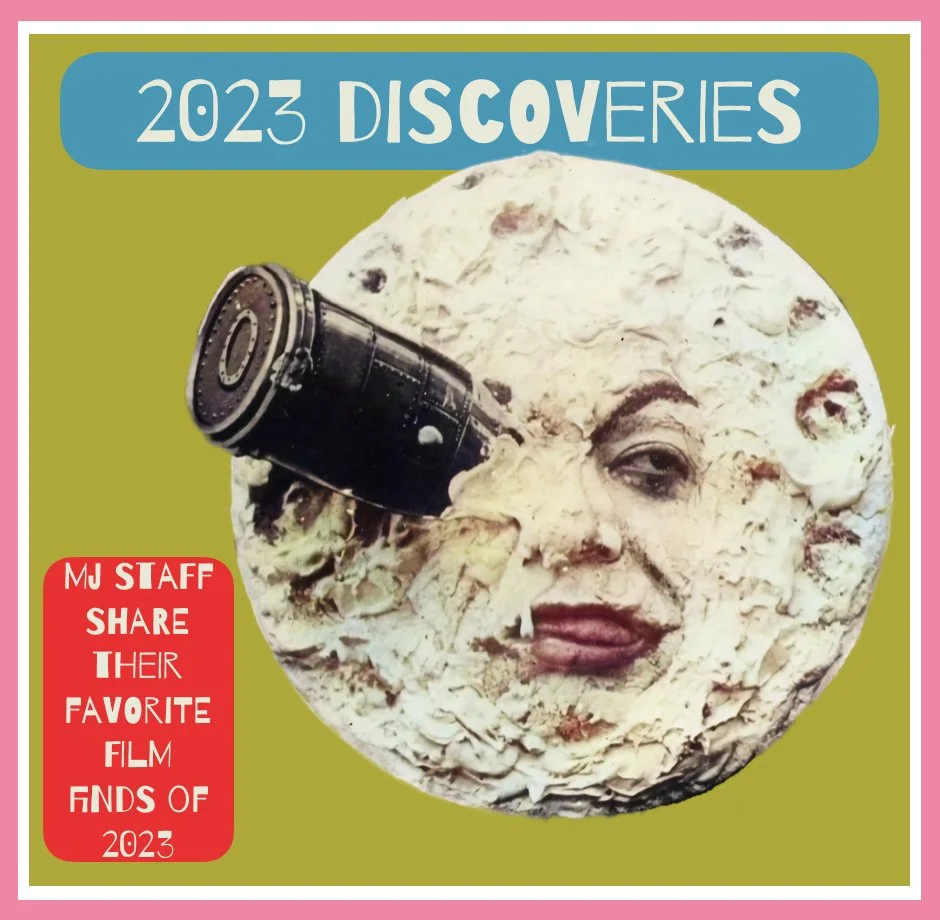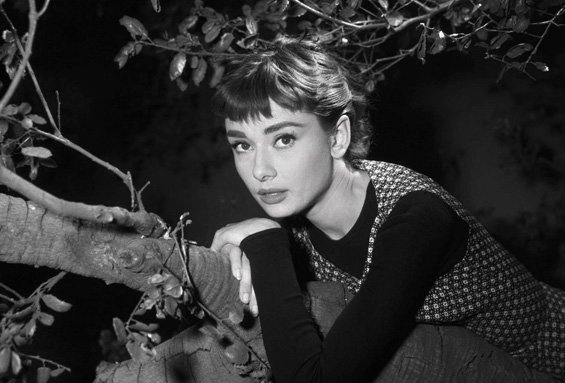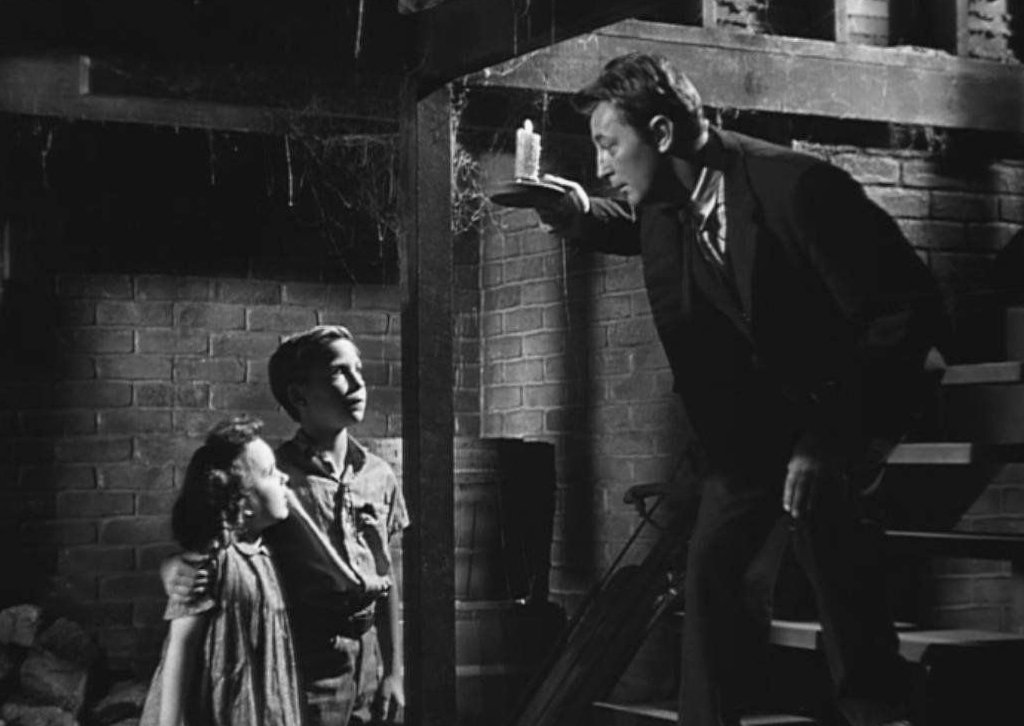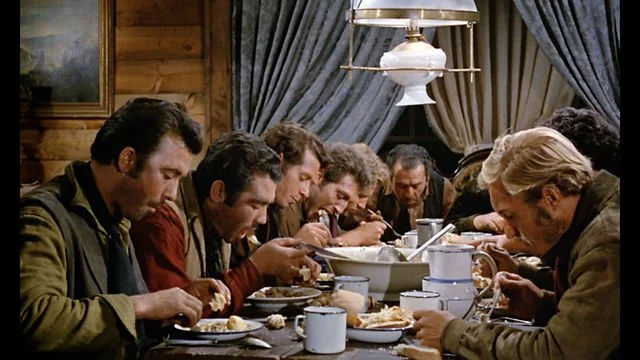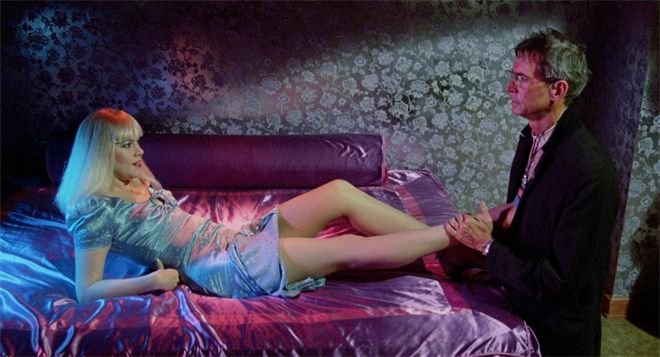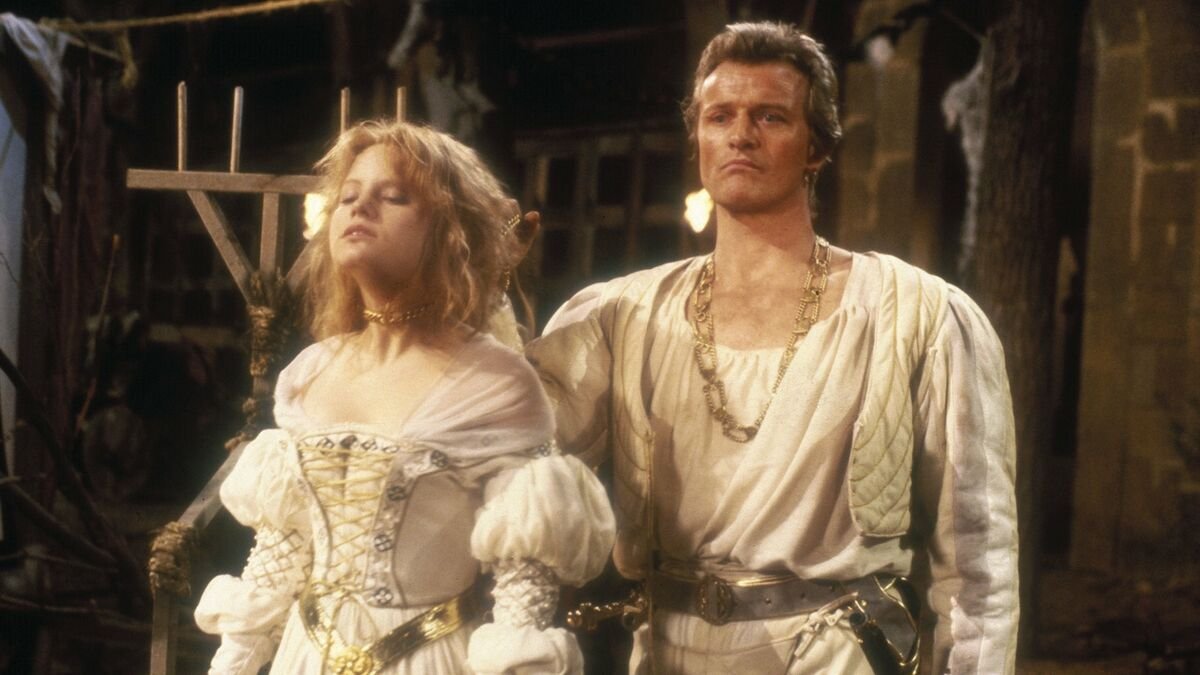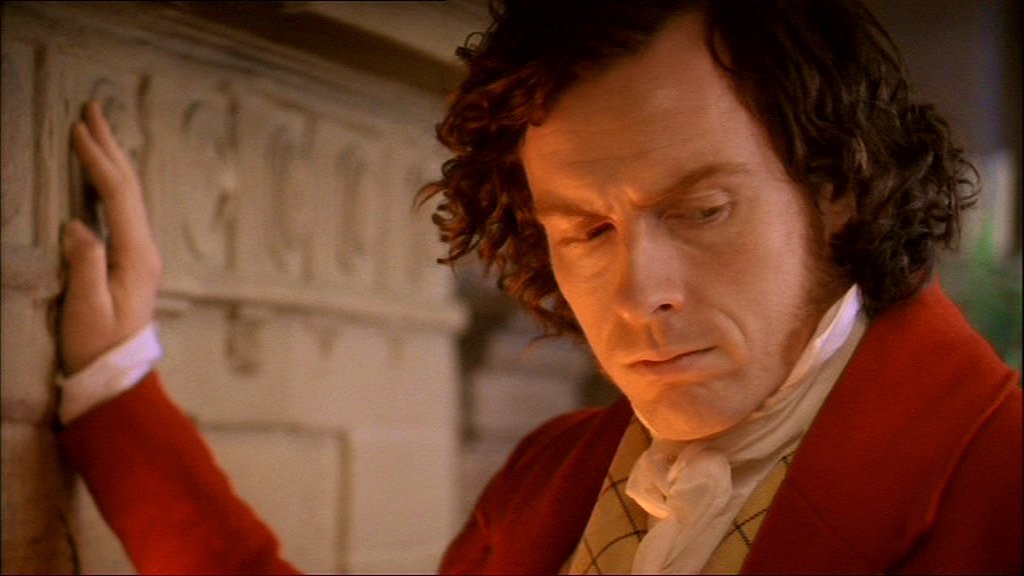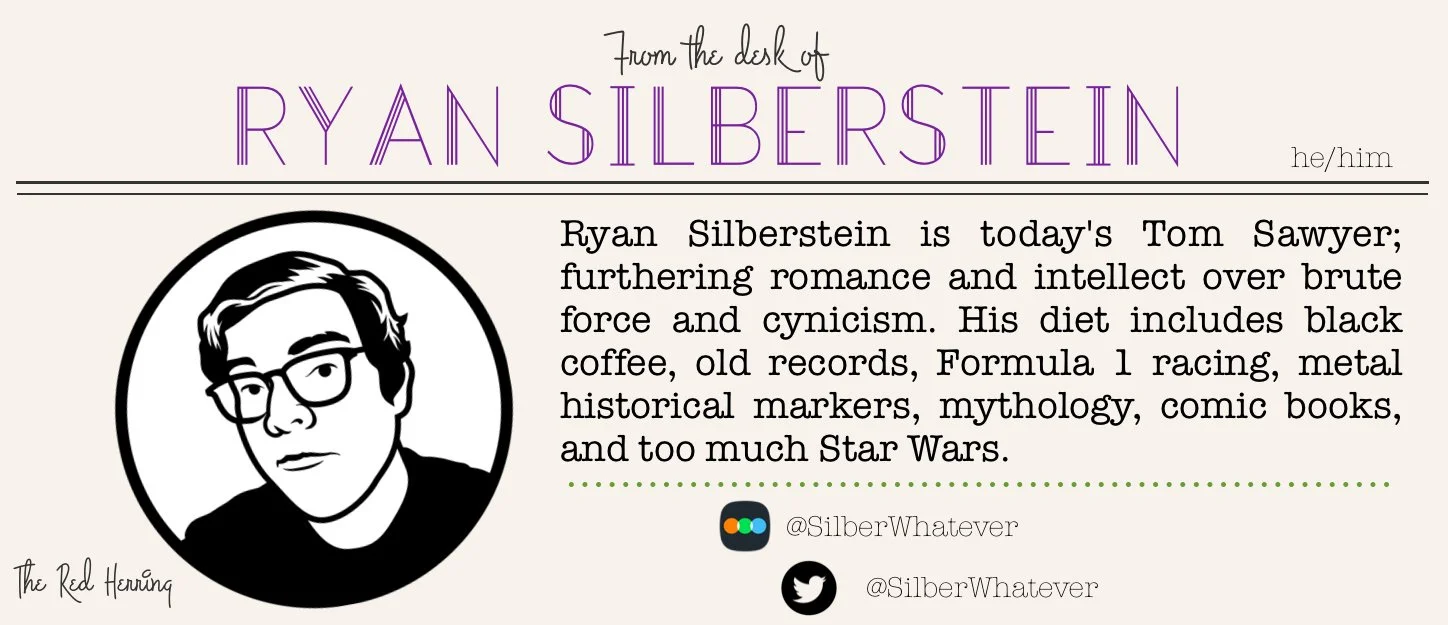Ryan’s Top 15 Discoveries of 2023
by Ryan Silberstein, Managing Editor, Red Herring
This is my favorite list to put together every year. I watched a ton of “new to me” movies this year, and so many of them brought me joy that it was hard to even narrow down to just 15 (even excluding things that have been written about on MovieJawn or in our zine recently). Follow me on Letterboxd to follow along throughout 2024, but these are the 2023 movies I wanted to highlight either because they stuck with me or I think they should be discovered by others who haven’t seen them yet! Here they are in the order I watched them this year.
Barry Lyndon and Eyes Wide Shut (dir. Stanley Kubrick, 1975, 1999)
As Blank Check is one of my favorite podcasts, my “new to me” watches often align with their miniseries, and their coverage of Stanley Kubrick last year compelled me to finally cross off my remaining blind spots from this supremely lauded director. I watched Barry Lyndon on New Year’s Day, and honestly, it might be one of the best lazy day (maybe slightly hungover) movies. It is a great mix of emotionally poignant and comedic. I am going to start pitching this movie to Gen Z as Saltburn with less sex and more natural lighting.
Eyes Wide Shut is about power and dynamics within a marriage, with sex as the lightning rod for the exploration. It is a decidedly unsexy movie about sex, trading in sinister dreamstates and exploring desire through liminal spaces within ourselves. We don’t always understand why certain things turn us on or off, and so much of our ego is wrapped up in who we think we are sexually–behind closed doors with or without a faux-ritualistic orgy–that any disruption to that can be irreversibly destructive. Great feel-bad Christmas movie.
Call Northside 777 (dir. Henry Hathaway, 1948)
Inspired by a true story about a man wrongly imprisoned for killing a police officer, Call Northside 777 follows reporter P.J. McNeal (Jimmy Stewart) as he investigates the case. McNeal starts out as a cynic, but as he becomes convinced of the man’s innocence, the wheels of power move to try to cover up the story. What results is a journalism thriller soaked in noir ink, pointing to the darkness of American politics. But it does also capture a sense of optimism and importance of journalism in the face of tyranny. All of this is anchored by a terrific Stewart performance that feels distinct from both his Capra-esque and western roles.
Mobile Suit Gundam: Char’s Counterattack (dir. Yoshiyuki Tomino, 1988)
One of the thing I love about the Gundam franchise under the leadership of original creator Yoshiyuki Tomino is his ability to see with one eye the wars of the past as leading us to a dark future and with the other hope in future generations to turn us toward peace. This dual worldview is maybe most acutely expressed in Char’s Counterattack, the film that closes out the original era of Gundam and brings the story of the original series' two lead characters, Amuro Ray and Char Aznable, to a close. Tomino emphasizes emotional storytelling over excessive plotting, and the animation lives up to this choice, creating an incredibly impactful conclusion.
Day of the Outlaw (dir. André de Toth, 1959)
You’d never know Day of the Outlaw was such a troubled production from watching it. A taut 92 minutes, it falls under the genre of “snow western” with most of the story taking place in snowy Wyoming. All of the characters are trapped not just by a raging blizzard but by their own desires and fears. De Toth manages the pace, slowing everything down in order to maximize the tension and let us sit with the violence (or threats of further violence), making us feel that there is no escape for any of the characters. This is as thrilling as it is dark and features a great Burl Ives performance.
Red Eye (dir. Wes Craven, 2005)
There are a lot of ‘90s and ‘00s movies I missed by virtue of coming of age in those decades, and not yet being a cinephile. If Red Eye is the kind of gem I am going to find, I need to revisit them sooner rather than later. A two-hander featuring Cillian Murphy and Rachel McAdams, the performances of both leads bring so much intensity that they are the primary source of thrills. Murphy is especially good here, effectively channeling some James Spader energy into his villain. This is very much a post-9/11 security state movie, but that roots it in the time and place of 2005. The 4K is also just an excellent transfer.
Sabrina (dir. Billy Wilder, 1954)
Casting Humphrey Bogart against type as a businessman who softens into a romantic lead is maybe the single best choice by Wilder. With Bogart playing off Audrey Hepburn, Sabrina becomes a heartfelt age-gap romance. The age difference here–unlike some other Hepburn romcoms–is part of the story being told, and seeing Bogart’s and Hepburn’s characters come to an understanding actually provides much of the romance. The comedy here comes from some of the same dark Wilder impulses that would later give us The Apartment, but are much less weighty. Plus, it would be impossible for me not to love a movie that leans so heavily on “La Vie En Rose.”
The Night of the Hunter (dir. Charles Laughton, 1955)
I was fortunate enough for this first watch to be projected on a stunning 35mm print at the Ambler Theater as part of their 35mm film festival that was originally slated to happen in 2020. This movie is absolutely as incredible as everyone says it is. Looking at Robert Mitchum in this movie is like staring into the abyss, just a black nothingness that may even surpass Peter Lorre in M. With its incredibly composed tableaus (the visual influence on Wes Anderson feels strange but instantly recognizable) and playful symbolism, this feels as chilling and alive in 2023 as it must have in 1955.
Cemetery Without Crosses (dir. Robert Hossein, 1969)
While Cemetery Without Crosses is–by all accounts–considered a spaghetti western, there is also something distinctly French about it. Hossein seems influenced by American westerns, Sergio Leone, and the French New Wave, and what results is a distillation of the genre to its bare essentials. The gunfights here are dizzyingly fast, while so much of the buildup is done with minimal dialogue. Hossein may have also been influenced by Jean-Pierre Melville, one of my very favorite filmmakers, and now I wish Melville had actually made his own western. Plus, the soundtrack is fantastic. Definitely a must for spaghetti western fans.
Night Moves (dir. Arthur Penn, 1975)
I did watch both Night Moves movies for the first time in 2023, but I wanted to call out the 1975 title because it blew me away. Never doubt ‘70s Gene Hackman (maybe the best decade run for any actor ever?), of course, but this greasy Hollywood-set neo-noir absolutely cooks. While it clearly draws on noir, Raymond Chandler, and other clear influences, there is an ingenuity in the plotting that also makes it feel like the next evolution of those stories
In the Cut (dir. Jane Campion, 2003)
Often, I feel women storytellers tell the most observant stories about men, because–rather than getting twisted in any sort of masculine ennui–women are able to approach men from a more removed vantage point. Women can see men from the outside. All of our ridiculous peacocking, our dick measuring, our fragile sense of self-worth; it can be depicted and evaluated by women without their own egos or identities intersecting with the subject. But women also live in a world where men are predators. Here, Meg Ryan breaks out of the romcom and into the dark underbelly of New York, spurned on by an insatiable curiosity. She is rewarded, through Campion’s lens, with a deconstruction of romance, marriage, and a sense of vulnerability that oscillates between naked honesty and fear as power dynamics shift back and forth.
Crimes of Passion (dir. Ken Russell, 1984)
Sometimes it takes someone as off-kilter as Ken Russell to speak the truth. Crimes of Passion mixes enticement and seduction with pushing further and further into some kind of truth about sex and relationships. The film’s subtext addresses the crisis of AIDS and the hypocrisy of American mores through the character Reverend Peter Shayne (Anthony Perkins), who sermonizes by day and visits prostitutes by night. Shayne is obsessed by the idea of salvation but doesn’t recognize that his own sense of brimstone and apocalyptic tone may be contributing to the actual reasons those around him need “saving.” Russell delivers this as a pop art package that seemed ready for MTV, or, at least, the version of MTV that Republican politicians claimed existed at the time.
The General (dir. Buster Keaton, 1926)
The original action-romance-blockbuster. I’ve only seen a handful of Keaton’s work, but this absolutely still thrills today and is not far off from the work of the Mission:Impossible series or the work of James Cameron. The characters are broad, the spectacle can only be described as larger-than-life, and everything here is in service of excitement. Sometimes the impact of good stunt work in present day films can be underwhelming because we know they can augment with CGI, erase wires, and so much else in post-production, but here everything is done in camera, so even the trickery itself is impressive.
Flesh + Blood (dir. Paul Verhoeven, 1985)
Whenever I am done with my westerns column (which will return from its unintended hiatus in 2024), I may jump backward in time to talk about medieval movies. I’ve had a love for medieval history since my days as an undergrad, and there is a rich history of movies set in the time period going back to the earliest days of the medium. The constant march toward “historical accuracy” is fun to chart through the genre, and Paul Verhoeven’s Flesh + Blood is a great example of giving the feeling of realism while allowing for religion to be taken seriously as a subject. Flesh + Blood may seem like an outlier at first, but like Robocop, Total Recall, Showgirls, Elle, and much of his other work, Verhoeven uses this setting to examine societal issues from the perspective of a single person. Here the focus is on sex, power, and plagues, and well, maybe this list does have a sort of running throughline after all.
Jane Eyre (dir Susanna White, 2006)
I know this is a miniseries, but I so rarely write about television. This adaptation feels cinematic enough (I would rewatch this in a theater in a heartbeat, provided there was an intermission) to be worthy of inclusion. Jane Eyre has been adapted numerous times, and I would not claim to be an expert on Charlotte Brontë’s novel or previous screen versions. But this version reflects my memory of the novel in tone and love for its characters. Jane Eyre is a complicated story psychologically, but White and screenwriter Sandy Welch trust Brontë enough to attempt bringing all of the novel’s nuances to bear rather than trying to reinterpret them. Ruth Wilson and Toby Stephens are exceptional leads and are able to use their chemistry together to underline the character dynamics at play. This version of Jane Eyre is a perfect example of showing that sometimes classics stand the test of time simply by being great.


